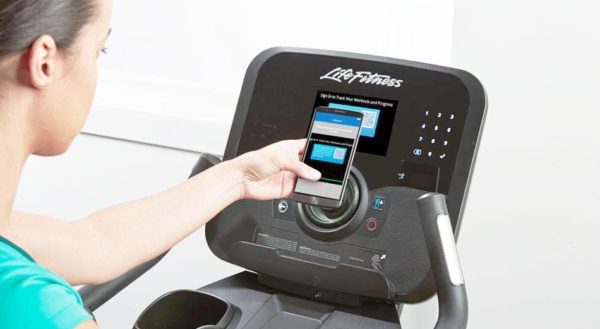
A gym’s members are the foundation of its business, and meeting their wants and needs is essential to grow and stay competitive.
But to provide the expected level of customer service, you’ve got to know what your members want.
Gym surveys are an excellent tool for gathering this valuable feedback, helping you make data-driven decisions based on what people want — and what can potentially make them turn to a competitor.
When done right, people are very receptive to offering up this information via survey. In fact, they’re motivated by it. When it comes to member loyalty, more than half of people say they stick with businesses that understand their preferences and priorities.
Ready to find more customers and get expert fitness marketing advice, all in one place?
If you’ve never conducted a survey like this before, you may be wondering the best way to approach it. In this guide, we’ll cover everything you need to conduct a successful survey, including:
- Examples of fitness survey questions to ask your members
- What to avoid when writing a survey, so people actually fill it out and offer information you can use
- How to distribute your survey to maximize response
What questions should a gym survey ask?
The design of your fitness questionnaire and the questions you include should reflect your goals, from fielding general feedback to understanding specific member behaviors. In general, surveys should gather information to help improve your business in five primary areas.
1. Help members meet their goals.
It’s safe to say that most gym members are there to stay fit, but their motivations can vary. Surveying your members can help uncover ways to better help them meet their goals, like training for a race, improving their heart health, or toning up with low-impact exercises.
Help your members get results with questions like:
- Why do you go to the gym?
- What exercises are usually a part of your routine?
- Do you prefer to work out alone or with a friend?
- Do you enjoy taking fitness classes? If so, which ones?
- What keeps you from reaching your fitness goals?
2. Deliver what members want.
Gyms today are more than just spaces to sweat. To stay competitive, gyms can offer a broader experience that enhances its members’ fitness routines.
But there’s no sense in installing a beautiful new sauna if none of your members want to use it. Resources aren’t limitless, so surveys can help you use them wisely while boosting member retention and new member sign-ups.
Meet expectations by asking:
- What amenities do you want to see added to our locker rooms?
- How would you rate our customer service?
- Is there a class you’d like to see added to our schedule?
- What frustrates you during your workout?
- How knowledgeable are our trainers?
3. Pinpoint cancellation trends.
Research shows that 50% of people cancel their gym membership within six months of joining. This churn may come from problems like inconvenience, lost motivation, cost, or better offers from competitors.
But guessing at reasons for member loss doesn’t help much with retention. When people cancel their membership, ask them to offer their feedback so you can prevent further turnover.
Ask departing members questions like:
- Why did you join our gym?
- What can we improve?
- How are you meeting your fitness goals after canceling your membership?
- Would you recommend our gym to a friend?
- What facilities do you expect for our membership price?
You might discover clients are looking for more amenities so it’s easier to get straight to work after their gym session, or they may want a better variety of trendy classes. If people simply lose motivation, your team could get creative with ways to inspire members to pack their gym bags, such as free trainer-led workout evaluations or member fitness challenges.
4. Enhance your marketing efforts.
Surveys help you tend to your current membership by using their feedback to design the best gym experience. But this information can also help you direct efforts to attract new sign-ups.
Collect demographic and behavioral information to guide your marketing strategies. Your social media presence, brand personality, and what features you promote should speak to the audience your gym serves.
Find out who your marketing audience is with questions like:
- When do you go to the gym?
- What is your age/gender/occupation?
- What workout classes are most interesting to you?
- Do you take health supplements?
- Have you worked with personal trainers before? If so, what did you most enjoy?
5. Understand why your gym attracts members.
New member surveys help highlight what you’re doing best and what motivates people to choose your gym. These responses also offer a different perspective, pointing out features or services you provide that long-term members might overlook.
New members can also help you gain insight into what marketing works. This data can help you evaluate your referral programs, social media promotions, and the effectiveness of your blog content.
Use questions like:
- How did you hear about us?
- What is your top reason for joining our gym?
- Have you been a gym member before? If so, why did you leave your previous gym?
- What facilities/amenities are most important to you?
Creating your survey
A great survey has two important features:
- It’s easy enough that people will complete the survey.
- It’s worded in a way that pulls out useful information.
To make it easy for members to complete your survey:
- Limit survey length to a maximum of 10 minutes (about 5 to 10 questions).
- Keep your surveys from getting tedious by varying your questions. Use a mix of multiple-choice, open-ended, and scale/rating questions.
- Don’t bombard people with too many surveys. Send surveys just a few times per year.
- Make sure your surveys are mobile-optimized so people can seamlessly click through questions on their phones.
- When you make a change based on survey results, follow up with members to show them that their voice matters.
In addition to what questions you ask, how you write your questions can impact a survey’s usefulness as well. Question bias is a common design flaw that confuses members and can generate misleading feedback.
Avoid using:
- Leading questions: Questions that suggest a response can skew your results in favor of that response. For example, “Most people work out three times a week. How often do you want to work out?” may lead more people to answer “three times a week.”
- Loaded questions: Questions that make assumptions about members can inadvertently exclude responses. For instance, the question “Do our amenities help you get to work quickly?” assumes the member works out in the morning.
- Multiple questions in one: Each question should focus on a single item for feedback. Questions like: “Does our class schedule meet your expectations for convenience, variety, and intensity?” asks members to grade three very different things in a single response.
Distributing your survey
People want to give you their opinion, especially if you demonstrate that their feedback gets used to benefit their experience. That doesn’t mean everyone wants to fill out a paper form after a sweaty workout.
Give your members the power to submit thoughtful responses in their own time by providing your survey in a digital format.
Straight to their inbox
If you aren’t using email marketing to engage your members, it’s time to start.
With sign-up records alone, gyms have a built-in email list at their disposal which they can use to add extra value to memberships through customized content. When it comes to retention, email marketing consistently outperforms social media and traditional advertising combined.
Email is also the perfect tool to distribute your surveys. If you already send out periodic newsletters to your members, they expect to receive communication from you — meaning they’ll be more likely to click through to your new survey.
Since you can also automate emails, new sign-ups, cancellations, or abandoned surveys can trigger the appropriate call for feedback without missing a beat.
Social media
Social media is a great way for gyms to engage with new and prospective members. You can use your profiles to distribute a full survey link, but social media is also an excellent way to field quick responses on one-off topics.
Encourage member participation to improve your gym and boost retention with questions over social media like:
- Which class should we add to our schedule?
- What’s your favorite thing to watch on TV when on the treadmill?
- What’s your go-to food right after a workout?
Quick response (QR) codes
While at the gym, people use their phones to listen to music, catch up on podcasts, and track their fitness activity. With this device already in hand, they can easily scan QR codes that direct them to a survey page, allowing them to give feedback while on-the-go.
You could post QR codes:
- In the locker room, to ask questions about cleanliness, facilities, or amenities
- On the way out of a class, to let people rate their instructor or give opinions about music, class size, or class style
- At your front desk, where people can offer open-ended responses about their workout

Extend the value of your surveys
Surveys work great to help you improve your gym’s experience, keeping members loyal. But the information you collect about your audience — what they value, prefer, and expect — can also help supercharge all of your marketing efforts.
Now that you have a good idea of what to include in your survey, use our fitness marketing guide, The Download, to apply your survey responses in a way that boosts member retention and attracts leads with proven digital strategies.




